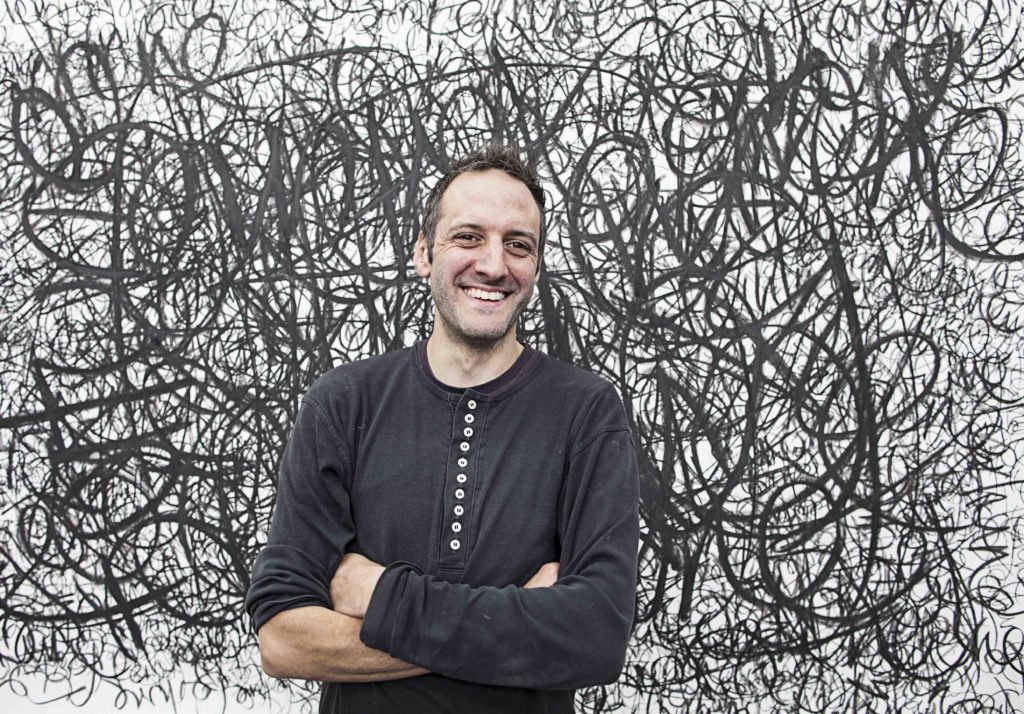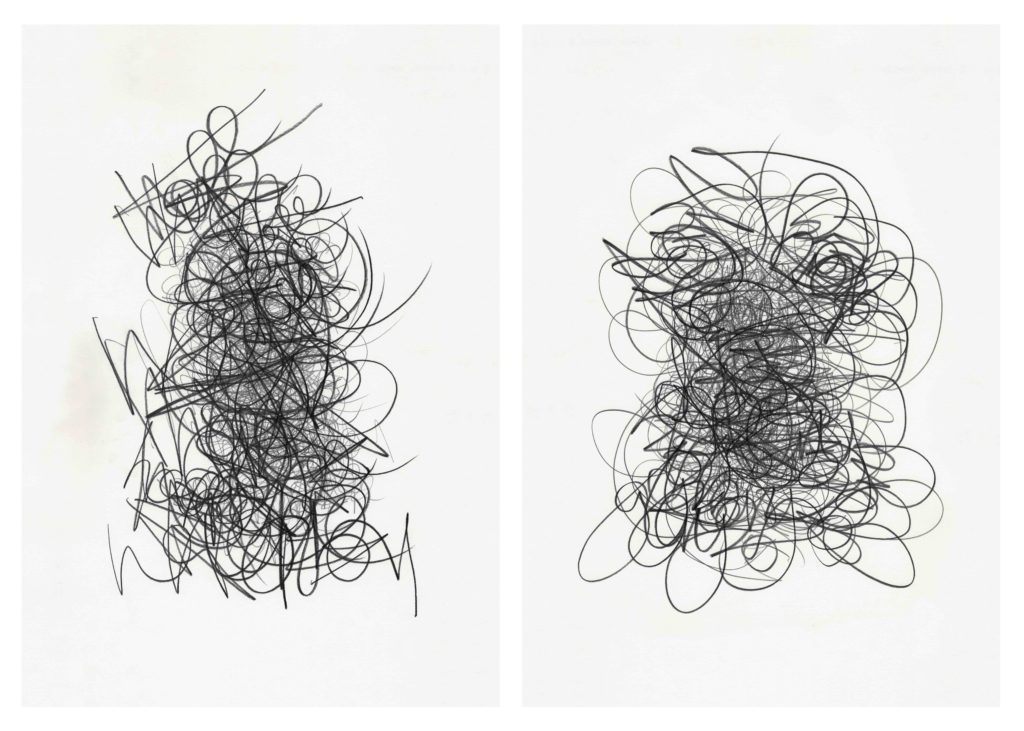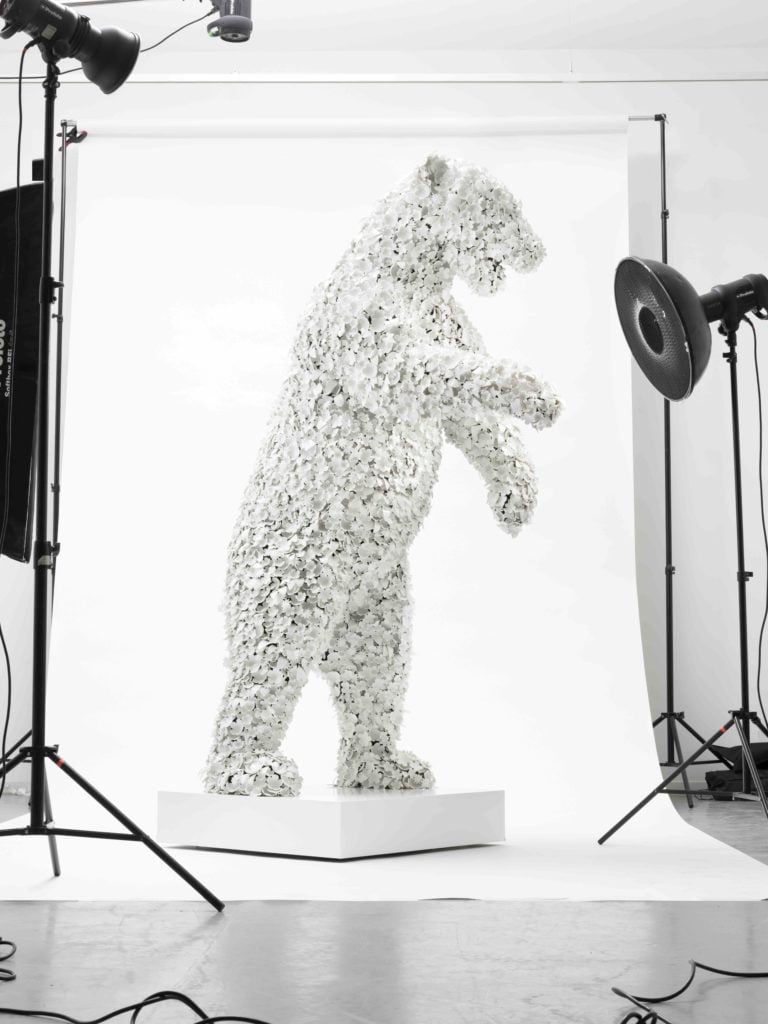

British artist Barnaby Barford’s latest solo show at David Gill Gallery, “Me Want Now,” opens today on November 17 and is the latest in a body of work that explores the material potential of different crafts and art forms—often through the re-purposing of traditional ones for wholly contemporary ideas. An internationally exhibited artist, Barnaby has had solo shows across Europe and the United States, including a recent exhibition charting his practice to date at MoCA Virginia.
Here, he discusses the complex technical processes behind his new work, and the troubling conceptual ideas fueling his practice. “Me Want Now” is on view now through December 15, 2016.
You studied ceramic and glass at the Royal College of Art in London: What is about those materials that first attracted you to them? Has that relationship changed over the years?
I was first attracted to ceramics because of the industrial process of slip casting. It was the first technique I had used that enabled me to make any form I wanted, and to repeat it over and over. Since then I have been interested in using industrially produced ceramics, interfering with and adapting the processes to create artworks. I have always wanted to push ceramics into different contexts, to challenge the expectations of the material and the capability of age-old industrial processes.

Barnaby Barford, Hope and Glory. Courtesy of David Gill Gallery.
You have been influenced by everything from Thomas Moore’s Utopia to the UK Riots—what things tend to inspire you?
Inspiration comes from everywhere—looking, seeing, listening, living. The human condition is the thread of inquiry connecting all my work, which means current affairs often influence me. How do we live now? What is happening now? Our hopes, dreams, aspirations, and, of course, our failures, fears, and frailties. Then finding parallels within history and questioning if we have always been like this? Will we always be like this? My work offers a glimpse of the world around us, it holds up a mirror and asks the viewer to look at themselves, the world and our place in it. You mention Moore’s Utopia and the UK Riots as previous inspirations, the challenges and social issues that Moore is grappling with in part one of Utopia are similar to those problems and inequalities that I believe were behind the riots.
Describe your creative process. What kinds of patterns, routines, or rituals do you have?
Making work is how I try to answer questions, and the process is an investigation into ideas. I start by gathering research and asking questions. I work with factories in the United Kingdom, Italy, and China to make the ceramic elements. These take a long time to produce, even before they can be processed in the studio and then used to make the sculptures. Things need to be planned a long time in advance. So a lot of the time ideas need to be fairly concrete early on in the process.
With “Me Want Now,” I built a scale model of the space and used toy animals to see how everything would interact. I make most of the sculptures in paper first, this gives me a good idea of how things will look and I am freer to make changes and try different things.
You achieved critical success with your Tower of Babel last year at the Victoria and Albert Museum. How did that installation come about?
The idea for The Tower of Babel developed over years of thinking about how shopping has become the main British pastime; I was trying to understand why we have become so complicit in this. Like most things I do, the initial idea seemed very simple: a 6.5-meter tall tower comprised of 3,000 bone china buildings, each depicting a real London shop.
It became a monumental undertaking that took two and a half years. I started the project by cycling all round London photographing shops, and soon after I approached the Victoria and Albert Museum with the idea. I worked closely with Alun Graves, curator of ceramics. I wanted to stage it in the Medieval and Renaissance gallery which is laid out like a medieval piazza or town square.
The idea to sell each unique shop was huge: Not only did it add so much conceptually to the whole project, but it was also groundbreaking for the museum. I brought together very disparate groups of staff in the V&A—curators and commercial teams worked side by side. The website was also incredibly difficult, pushing technological boundaries. I needed an e-commerce site that also acted as an art project.

Barnaby Barford, Polar Bear. Courtesy of David Gill Gallery.
Your newly opened show is called “Me Want Now. ” Can you tell us about that title and what it means?
When I started this project, I wanted to make a body of work exploring our insatiable appetite for immediate gratification, but the ideas have developed much further than that. This past year, we have seen a seismic shift in our political landscape. I am hugely concerned with the way we are headed, and “Me Want Now” has become a response to this situation.
It started with words, making pictures using the same word repeated over and over again warping the meaning and making abstract images. Hope, glory, change, power, more, choice—it feels like words have never been so important. Those written in the press, posted across social media and in speeches from our politicians, in volatile times words can be dangerous. The meanings of the words that I chose changed over time. “Me Want Now,” I hope, explores the pursuit of these things, the rise in the “me first” culture and the collateral damage that ensues when consequences are ignored. I hope it is a provocation, an invitation to question ourselves, our values, and our choices.
There is an eight-foot polar bear at the center of this new installation, and your Tower of Babel was six meters high. Does size matter? What are the complexities of working in ceramic to this sort of scale?
I make things as big as they need to be. The Tower of Babel is supposed to reach the heavens and as such, needed to be tall. Equally, the shops at the top needed to feel unobtainable.
The polar bear sculpture is life-size, as are all the animals in the show. The Word Drawings are large because I wanted the viewer to feel surrounded, captured, and for them to have a sense that these things, the words, the concepts are bigger than us, physically and metaphorically.
The complexity of working with ceramics at this scale comes in the details. Polar Bear is made up of over 7,500 individual ceramic pieces, each piece handmade by a manufacturer and then in the studio we attached a wire to each one by hand. These are individually attached to structures that make up the sculptures. The process is hugely time-consuming and labor-intensive. I am using processes which are not designed to make this kind of work. The manufacturers are working to within a few degrees in the kiln, thousands of pieces can be lost with a change of 5 degrees, and the color and finish can totally change. Each individual ceramic piece has to be perfect.
The artnet Gallery Network is a community of the world’s leading galleries offering artworks by today’s most collected artists. Learn more about becoming a member here, or explore our member galleries here.





